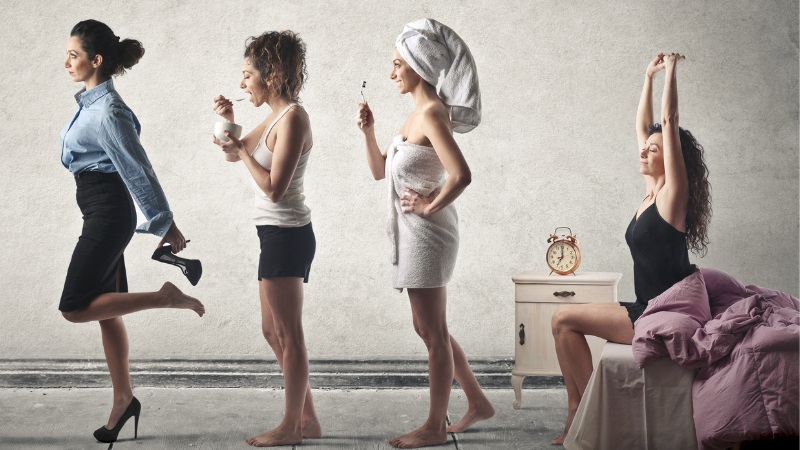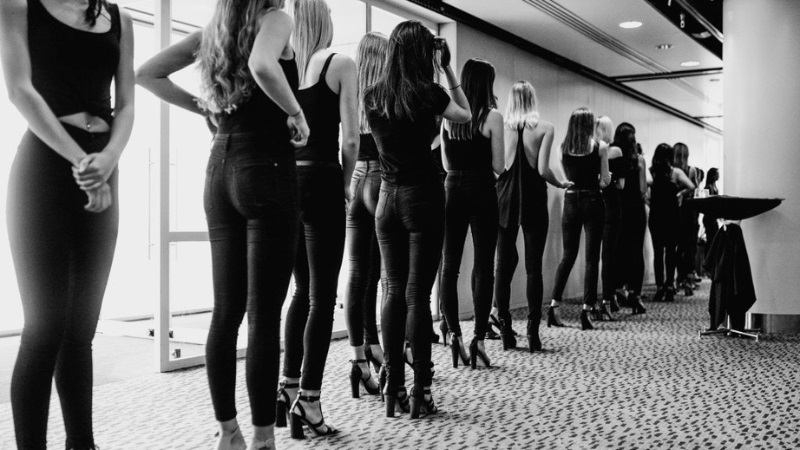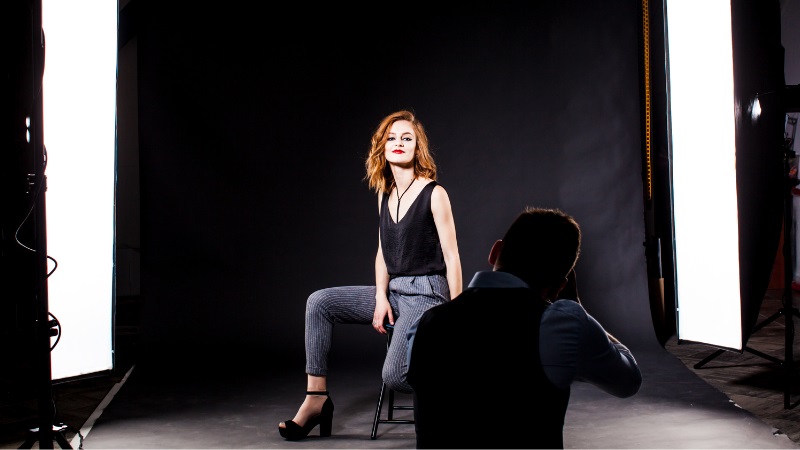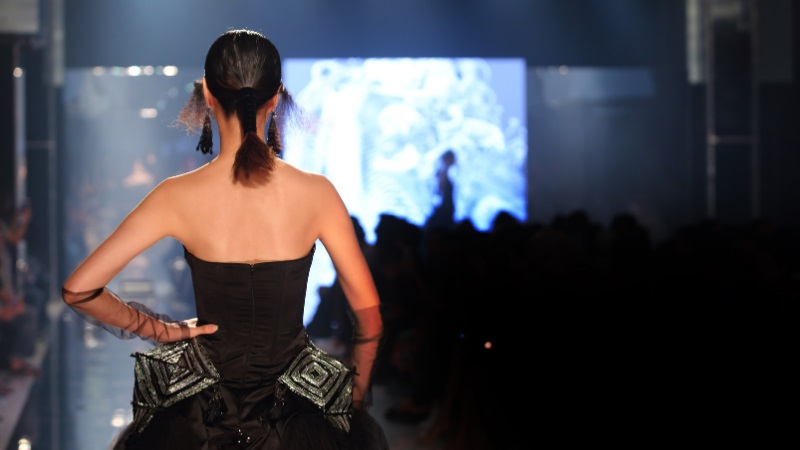
Life of a Fashion Model
The life of a model is interesting yet challenging – one that demands perseverance, diligence and grit.
In order to be considered successful in the modeling world an individual needs a specific physical build such as body type & height which involves undergoing training sessions designed to fine-tune their posture & overall appearance suitable for modeling jobs keeps them ahead in this business which ultimately depends on how they look themselves during various shoot assignments or runway shows supplied by clients thus Requires consistent maintenance through regular exercise regimes, utmost priority towards healthy eating habits alongside maintaining quality skin care treatments over time.. If you’re curious about what really goes into being a model day-to-day then read on! This article aims at providing answers to some frequently asked questions regarding their daily activities.
How much sleep do models get?
Performing well as a model requires attention not only towards outward appearance but also internal well-being which includes sufficient rest periods. However, every individual has different requirements based on lifestyle choices & professional engagements which applies even among professional models. There are no standardized recommendations regarding sleeping patterns applicable across this industry yet adults are encouraged to maintain a healthy sleep duration of 7-9 hours each night. Despite the fact that the modeling profession can be stressful with uncertain hours and frequent traveling, models should prioritize their health & try to establish steady rest patterns based on individual needs.
How long do models workout a day?
Maintaining an impeccable physique requires consistent hard work from fitness models who train anywhere from one to three hours per day spanning five to six days every week effectively. In addition, the incorporation of yoga routines plus meditation techniques alongside stretches is not uncommon among these model types’ workout schemes.
Conversely, achieving a lean frame is vital for runway modeling jobs; thus athletes favor high-intensity bodyweight mixed with strength training workout schedules lasting between half an hour up to one hour three or five times weekly minimum but no more frequently than necessary since overworking out leads to physical weariness and mental exhaustion. A model’s good sense is to be in touch with their body’s needs and act accordingly; ideally, resting when necessary and refraining from overexertion, accompanied by nutritious meals on a carefully selected dietary plan plus sound sleep patterns.
What is a model diet?
The idea of a “model diet” can take on various meanings depending on the context in which it is used. It largely describes how models eat to achieve a particular figure or meal plan designed for those who desire physiques similar to those seen among professionals in modeling industry circles. Maintaining a slim and toned body is crucial in this field; hence many models follow rigorous diets that may limit calorie content eliminate certain food items from their menus or stick with specific meal plans altogether. Sadly though some people suffer from eating disorders as they seek perfection in their appearance and weight maintenance efforts.
Nevertheless, we must recognize that not all models adhere to unhealthy dietary practices nor do any one size fits all prescriptions exist concerning what constitutes an “ideal” body type/diet plan combination for everyone else! Instead of fixating solely upon achieving predetermined physical goals through conforming to strict nutritional restrictions/limitations in food choices, we must prioritize our overall health and well-being above everything else!
How much do models eat?
One key point is that the quantity of food consumed by models can vary significantly based on their metabolism rates, activity levels, and preferred diets.
As typical individuals would need it too; these models also require regular consumption of balanced meals containing adequate nutrients for optimum health maintenance. In general terms however an adult should consume between 2,000-2,500 calories each day but this may change across age groups, gender types, heights, weights, and if they are actively working out or not. Furthermore, it should be noted that not all types of models have the same dietary requirements. Fitness or bodybuilding enthusiasts may consume more calories for bulking up while others could focus solely on maintaining a lean build. Notwithstanding everyone in the industry must ensure their dietary habits match their unique lifestyles as well as individual goals.
What is the healthiest waist size?
We all want to make sure we’re staying healthy – but figuring out what constitutes a ‘healthy’ waist size for you can be complicated! After all your build and overall wellbeing will all impact where the ideal number falls on the scale. As a rule of thumb though if you’re female aim for under 35 inches (88cm) and males should shoot for under 40 inches (102cm).
But why does this matter? Well having too much fat around your midsection ups your risk of dealing with issues such as type 2 diabetes heart disease or high blood pressure. Keeping this area under control by eating well-balanced meals alongside regular exercise is therefore key if overall good health is what you’re aiming for! However don’t forget: although knowing where you stand when it comes to the circumference of your waist certainly matters- paying attention to other factors like blood pressure levels, cholesterol levels, and overall fitness level are also crucially important if optimizing well-being is your goal.
What are the negatives of being a model?
As a model its important to consider some of the potential drawbacks that come with pursuing this career path.
For starters, models are often expected to meet extremely high beauty standards that are nearly impossible for the average person to achieve. This can lead to feelings of insecurity and low self-esteem which can be especially tough given that maintaining their appearance is a full-time job in itself.
Models have to keep up with strict diets, workout routines, and beauty treatments, which can be physically and psychologically exhausting. Moreover, this is an incredibly competitive field where rejection is an inevitable part of the experience.
While this can be difficult for anyone, its worth noting that models might take it harder since their personal appearance plays such a significant role in their work.
Moreover, some people in the industry may exploit models by offering low wages or unsafe working conditions or even sexual harassment. Lastly modeling careers are often relatively short-lived; as time passes by and models get older finding work becomes increasingly difficult.
This makes it hard for them to build financial security or a stable career over time.
All of that being said; its worth highlighting that not all models experience these issues. Many find modeling fulfilling and enjoyable despite these potential downsides! One must recognize the potential drawbacks of pursuing a modeling profession before fully committing to it.
Do models lose their periods?
It is essential to acknowledge that models may undergo fluctuations in their menstrual cycle alongside other menstruating individuals due to diverse internal and external factors like stress levels, dietary habits, exercise routine modifications compounded by hormonal imbalances, and medical conditions. However vital to keep in mind the fact that normalizing the notion of menstruation being part of biological processes prevents associating its occurrences with one’s profession or being a role model; they are unrelated.
Be cautious when using the phrase “menstrual loss,” which implies stopping vaginal bleeding intentionally/unintentionally; missing periods show signs of underlying health issues requiring prompt consultation with appropriate healthcare professionals.
What a fashion model eats a day?
One thing to remember is that each person’s nutritional needs are unique depending on factors such as age, gender, activity level, and overall health status. Nevertheless, many models aim to follow a wholesome diet in order to support their body type and career goals. Below is an example of what you could expect from a models routine daily meal plan.
To start the day off right and keep things light at breakfast time – you can choose between having an almond milk or coconut water smoothie mixed with spinach/kale/berries/bananas or hot oatmeal sprinkled over fresh berries/nuts.
For lunch – expect something like green leaf salad packed full of bright-colored veggie additions like peppers/cucumbers/cherry tomatoes topped with either grilled tofu or chicken accompanied by healthy sources of fat from say avocados/nuts – all seasoned together by means of simple olive oil and vinegar vinaigrette.
Models tend to snack during the day for an energy boost some healthy options to refuel could be fresh fruits, hummus with raw vegetables, or small portions of nuts. At dinnertime in the life of a model there’s usually no compromise on the importance of clean nutritious meals.
To ensure the necessary protein intake, grilled chicken or fish often takes center stage alongside a generous serving of roasted veggies – think Brussels sprouts or sweet potatoes. Adding to the mix with small amounts of whole grains such as brown rice and quinoa brings added nutrients.
Overall models make it a point to focus on whole foods over processed options while staying mindful of calorie intake. For those hoping to establish more targeted meal plans based on their unique nutritional needs and objectives tapping into the knowledge of a nutritionist could prove invaluable.
Do models wake up early?
For most models out there hustling daily; early mornings have become the norm. The day usually starts with several hours of hair and makeup before attending fittings or casting for photo shoots or auditions throughout the day. Beyond modeling, sustaining an active lifestyle is crucial for many individuals within this industry; this means early morning workouts.
To stay fit and on top of their game requires a dedicated mindset, perhaps one that prompts waking up earlier than usual to ensure everything falls in place effectively. Ultimately, every model’s schedule varies depending on current projects – flexibility remains pivotal.
What does a model do all day?
Curious about what it’s really like to work as a model? While every day can seem different depending on ongoing projects/schedules/commitments here’s an overview:
First things first: models often have early starts in order to prepare their hair/makeup/wardrobe before heading out for auditions or fittings. It’s all about looking one’s best! Next up are castings/fittings where models try on outfits from various designers/brands while being measured/sized up.
They may have to showcase different styles or walk down runways during these sessions.
Photo shoots are another big part of the job: posing for fashion magazines/advertising campaigns means long hours spent in front of cameras throughout the day.
Social media is also key when it comes to promoting one’s work as a model; platforms like Instagram help build personal brands and connect with fans/fellow industry professionals.
Staying fit/healthy is crucial too – in order to maintain a desired physique (and appeal) through regular exercise/nutritious meals.
Finally, travel may be required often – with models jetting around the globe regularly for events/shows/photo shoots/etc…keeping busy! Resting sufficiently is paramount for models as they must maintain their alertness and vitality throughout their day at work.
You may need to alter your sleeping regimen slightly to adjust for early call times or late-night engagements.
Despite its rigorous demands, the modeling lifestyle can also be thrilling and fulfilling.
Why are models very thin?
It’s no secret that the fashion world tends to favor slim models – believing that clothes look best on thinner frames. This emphasis on thinness has long been justified by arguing that slender models offer an unobtrusive backdrop against which designers can feature their creations.
However many have criticized this narrow beauty standard as being unhealthy and even dangerous – causing those who don’t fit into such categories negative effects including unusual eating patterns or obsessive skin care regimens, etc. In recent years though some steps towards greater diversity have been taken by emphasizing more varied-sized models so that not just one type dominates adverts including plus size models, older models, and more.
Nevertheless, there is still a lot to be done to create a healthier and all-inclusive fashion industry.
Why are models so bony?
While having strong bones might not be inherent to successful modeling careers – appearing thin has become somewhat synonymous with success in the fashion industry; at times even leaning toward gaunt appearances. The reasoning behind this lies in designer beliefs that less curvaceous body types showcase fashion to its fullest potential. A thinner canvas is what designers deem most favorable as it serves as an optimum backdrop for their designs to really shine without any competing physical features.
Nevertheless, this approach has been lambasted for generating unrealistic beauty standards that generate eating disorders and other mental health concerns due to distorted self-image representation. It’s vital to acknowledge that each person’s body weight varies based on unique factors; thus one person’s ideal healthy weight may not necessarily be the same as another. Fortunately, many brands and designers have taken steps towards inclusivity by casting models of diverse sizes, ages, and body forms in attempts to create a healthier and all-encompassing fashion industry.
What workouts do models do?
In order to succeed as a model it’s generally necessary to have a lean physique. However, the specific workouts one might engage in can vary depending on personal preferences, goals, and scheduling constraints. Here are some examples of workouts that models often incorporate into their fitness routines.
Cardiovascular exercise is a common choice for models looking to burn calories and improve endurance.
This might include activities such as running, biking, or swimming.
Strength training is also important for many models. Some choose weightlifting or Pilates to increase muscle mass and improve posture.
Others may opt for yoga to enhance both physical strength and mental focus.
High-Intensity Interval Training (HIIT) is another popular option among models.
The alternating periods of intense activity and rest in HIIT workouts help burn calories quickly while also improving overall fitness levels.
Bodyweight exercises like push-ups, squats, and lunges are versatile options that can be done anywhere without any equipment required. This makes them particularly useful for models who travel frequently.
Finally dance lessons – such as ballet or jazz – can be a fun way for models to improve flexibility, coordination, and overall fitness levels. In general, models tend to prioritize workouts that enable them to keep their physique toned and also enhance their overall well-being and physical capabilities.
How can I lose face fat?
To achieve success within the modeling realm one must often acquire a lean physique; however, the methods used to gain said figure vary from individual to individual depending on personal preferences, goals, and scheduling constraints. Here are some examples of workouts integrated into many models’ routines:
Cardiovascular exercise is widely employed by models seeking calorie-burning benefits alongside endurance building. These might include running, biking, or swimming.
Many models also prioritize strength training with options such as weightlifting or Pilates aimed at increasing muscle mass whilst improving posture.
Conversely yoga is another popular choice thanks in no small part to its ability to fortify both physical strength and mental focus simultaneously.
High-Intensity Interval Training (HIIT) has been embraced by a considerable number of aspiring models due to its capacity to quickly burn calories whilst boosting overall fitness levels through alternating periods of intense activity and rest.
Bodyweight exercises offer a versatile solution requiring no equipment whatsoever; push-ups, lunges, or squats can be done wherever you happen to be making them particularly suitable for those constantly on the go.
Lastly, dance lessons in genres like ballet or jazz provide an enjoyable outlet for developing flexibility, coordination, and overall fitness levels among aspiring models.
For models, staying in optimal shape involves prioritizing workouts that not only keep them looking toned but also improve their health and physical performance.
Do models eat one meal a day?
It’s wrong to generalize that all models survive on just one meal per day because that’s not entirely factual. True, some reports indicate that certain models consume just one or less serving in a day, but it’s not an ordinary practice across the board.
The majority of models adhere to a nutritious and well-balanced diet involving several meals throughout their daily routine while adding regular exercise to keep themselves fit and active. The fashion industry has started acknowledging the importance of embracing healthy body images along with diverse expressions across various shapes and sizes as well.
However, it’s also true that constant pressure exists within the fashion ecosystem where maintaining specific physical dimensions takes priority resulting in unhealthy dietary habits such as crash diets becoming prevalent themes amongst aspiring models. To counteract this predicament health should take precedence over societal demands making sure everyone can appreciate their bodies positively.
Why are models faces cut?
The term “cut” frequently crops up in discussions within the fashion world as it pertains specifically to the underlying structure of a model’s facial features. If someone describes a model as having a “cropped” face they typically mean that they have chiseled cheekbones, a sharp jawline, and defined eye sockets – all of which contribute to an overall striking appearance perfect for runway shows or fashion photography shoots. Such models are highly favored throughout the industry due to their abilities in creating interesting shadows and angles on film.
In order to make an impact within the field of fashion one must rely heavily upon visually arresting images that stick in people’s minds long after they’ve seen them. It, therefore, stands to reason that models possessing “clipped” faces would be particularly well suited for this purpose.
Nonetheless, it bears mentioning that many within the industry are now placing greater emphasis on inclusivity and diversity by seeking out models of all ethnicities, shapes, and sizes. Though “cropped” faces still hold a certain degree of prestige in some situations the fashion industry is increasingly recognizing the value of celebrating a wide range of unique facial features.
Do models eat junk?
Models like any other person also possess individualistic food inclinations. Despite that keeping a healthy diet is a nonnegotiable aspect of their profession. Yet some models do indulge in junk food occasionally. Maintaining an even-keeled and nutritious meal helps augment not only the silhouette but also energy levels and overall well-being – pivotal factors in the ambitious and demanding universe of fashion modeling.
A majority of models collaborate with seasoned nutritionists or accredited dietitians who curate tailored meal plans inclusive of diverse nourishing items such as lean proteins, whole grains as well as fruits & vegetables.
There have been instances where certain models adopted restrained eating habits that sometimes exclude certain food groups or impose caloric restrictions – leading to detrimental effects on mental and physical health- it’s crucial to acknowledge the significance of better alternatives over following a strict dietary regime. The current scenario exhibits positive change with the fashion industry increasingly prioritizing healthy body images while cautioning against harmful practices such as extreme dieting.
Are models at a healthy weight?
It would be incorrect to assert that all models share a healthy weight as model weights vary widely across individuals. The fashion industry has previously faced criticism for its prevalence of underweight models and their potential health implications through time.
Although recent years have been marked by some positive changes in promoting inclusivity and diversity within this sector some models may still feel compelled to maintain an unhealthy weight — justifying it using certain modeling standards. It is vital to recognize that maintaining good health involves more than BMI or physical appearance factors given that genetics, body composition, and lifestyle all impact an individual’s overall wellness. Prioritizing everyone well being regardless of their physical build or shape is fundamental while also disregarding social pressures when doing so.
Lastly as one must acknowledge the fashion industry’s responsibility towards promoting healthy habits alongside positivity about different types of bodies while placing model health above unrealistic beauty standards.
Are models healthy?
The health status of models varies greatly; thus it’s inaccurate to proclaim that all models are fit for modeling due to maintaining healthy habits such as eating balanced diets and regular exercises. The fashion industry has raised significant concerns about its impact on both the physical and mental health of these individuals. Historically, there have been numerous cases where models engage in risky behaviors like drug use or smoking, or severe dieting strategies just so they could maintain their preferred weight measurement necessary for modeling requirements.
Such practices have grave implications on both physical/mental well-being because it is not just a matter of losing weight; rather they compromise important dietary nutrients causing malnourishment/comorbidities risks.
Moreover, beyond physical effects from competitive work dynamics that result in increased scrutiny/criticism around looks leads to anxiety/depression amongst other things negatively affecting mental well-being.
Fashion powerhouses are increasingly realizing how imperative it is to promote healthy attributes/beliefs including embracing diversity/inclusivity with different body types/sizes of individuals/models creating a more welcoming/safe work environment. We cannot overlook the fact that models face distinct challenges related to their health.
Therefore, it is crucial that we prioritize our well-being above societal norms, foster a healthy body image culture, and promote healthy lifestyle habits across all populations -including fashion professionals- by advocating for physical fitness practices.
When did models become so skinny?
Twiggy became the poster child for a new trend in fashion during the 60s when models’ shapes started diverging from the classic hourglass figure towards a more waif-like structure. This development had a lasting effect on the industry with many designers since then preferring thinner models.
There have been some strides made towards improving diversity and inclusivity lately; however, there is still a lingering expectation within certain quarters of sticking to specific beauty standards that prioritize slimness above all else. Such an unyielding focus on weight loss has garnered much negative attention due to its detrimental impact on models’ well-being and consumer body image perceptions.
Nevertheless, various parties are now actively advocating for more realistic and multifaceted visions of beauty within fashion while combating pressure to adopt harmful or unrealistic expectations about appearances.
What foods make your waist smaller?
When it comes to achieving healthy weight loss goals and trimming down your waistline it’s important to prioritize certain foods in addition to engaging in regular exercise routines. Here are some examples of the foods you should be incorporating:
Firstly high-fiber foods such as fruits vegetables whole grains legumes and nuts will not only make you feel fuller longer but also reduce the temptation to overeat.
Secondly consuming enough protein is important for boosting metabolism and maintaining muscle mass which ultimately leads to slimming down the waistline. Focus on eating lean meats fish eggs dairy products legumes or nuts as sources for this macronutrient.
Third consuming healthy fats like those found in avocados nuts seeds or olive oil reduces inflammation and promotes satiety both of which help support weight loss efforts.
Last (but not least) pay attention to the glycemic index (GI) of your foods.
Lower GI foods help regulate blood sugar levels reduce sugar cravings and prevent overeating.
Incorporate these types of food choices into your diet for ultimate health benefits.
Remember while there is no “magic” food that will work miracles on its own incorporating healthy well balanced foods and exercise into your lifestyle can lead to effective weight loss goals.
An effective way towards achieving sustained healthy eating habits is by consuming low-GI foods such as whole grains, legumes, or non-starchy veggies regularly along with high-water-content fruits or veggies that keep one hydrated during the process of shedding extra pounds around the waist area.
It’s important not just to limit oneself only to dietary modifications but also to push oneself to exercise regularly for optimal results. Consultation with the doctor is highly recommended prior to making any lifestyle changes that are significant.
What waist size is attractive?
Waist measurements are influenced by cultural norms along with individual preferences for beauty standards amongst societies across the globe. Yet research shows that women tend to consider waist-to-hip ratios (WHR) at around 0.7 more appealing; this means that the waist measurement would account for approximately seventy percent of hip measurements; WHR ratios are linked with improved reproductive well-being reducing risks associated with cardiovascular diseases in addition to diabetes.
However, it should be understood that beauty is not determined by one’s physique or size; individuals of all shapes and sizes can be attractive in their own unique way. Instead of conforming to the societal standards for specific waist or body types, it is more important to aim toward overall health and well-being.
Why are small waists attractive?
Slim waists have forever been associated with allure as they symbolize sound health, fecundity, and femaleness. Across various cultures globally, possessing a small waist-to-hip ratio implies youthfulness, fitness as well as fertility among females.
An evolutionary perspective contends that having this physique denotes female fecundity since females possessing such bodies are known for experiencing problem-free pregnancies & childbirths alongside being able caregivers for their progeny post-delivery.
This phenomenon may have resulted through natural selection wherein those drawn towards women sporting svelte waists end up having healthier offspring over time! Recently though media portrayal intertwined with conventional standards indicates that trim waists are found fashionable too! The beauty & fashion industries popularize sleek yet toned bodies deeming it the quintessential beauty standard which has the propensity to influence people’s perception of attractiveness. One must note that beauty standards can differ considerably between societies and individuals alike while ideas of what’s attractive can evolve with time.
What workouts do most models do?
When it comes to achieving a lean physique as a model various exercise techniques such as cardio workouts, and strength training processes coupled with low-impact exercises can be crucial. However, it must be recognized that every model’s fitness routine is different – personalized to their unique requirements and preferences.
The following are some popular types of workouts many models use to realize the desired look:
Pilates: Pilates, a low-impact workout specifically designed to strengthen the core while toning the whole body by improving flexibility is frequently praised by numerous models for its ability to build long lean muscles without adding bulk. Yoga: Another mild but effective workout incorporated into many models’ routines is yoga, which provides benefits ranging from enhanced flexibility, balance, and posture while also reducing stress levels.
Cardiovascular exercise: Many models integrate high-intensity aerobic activities such as running or cycling using HIIT exercises into their workouts. By including this form of workout models can burn fat across the body develop endurance and improve their overall physical fitness levels.
Strength training: Resistance bands coupled with lightweight weights are commonly utilized as a part of strength training sessions for toning muscles without adding bulk. This approach leads to improved muscle contouring while producing an overall toned appearance.
Barr’s workouts merge ballet-inspired moves with Pilates exercises to create long, lean muscles whilst also boosting flexibility and balance. Models typically concentrate on exercises that encourage a fit, toned, and harmonious physique, while laying importance on overall fitness and good health.
How do I prepare my body for modeling?
To attain a lean physique as a model incorporating various exercise techniques like cardio workouts, strength training processes, and low-impact exercises can be instrumental. However, it must be recognized that every model’s fitness regimen is individualized according to their unique needs and preferences.
Here are some popular workout types that many models engage in to achieve their desired look:
- Pilates: A low-impact workout specifically designed to strengthen the core while toning the entire body by enhancing flexibility has gained praise from numerous models for its ability to build long lean muscles without adding bulk. – Yoga: Another gentle yet effective exercise regularly incorporated into many models’ routines is yoga; it offers benefits such as improved flexibility, balance, and posture along with reduced stress levels.
- Cardiovascular exercise: High-intensity aerobic activities like running or cycling using HIIT exercises are often part of models’ workouts. This form of exercise helps models burn fat across the body develop endurance and improve overall physical fitness levels.
- Strength training: Resistance bands coupled with lightweight weights are commonly utilized to tone muscles without adding bulk during strength training sessions. Barr’s workouts are designed to enhance muscle contouring and provide an overall toned appearance.
These routines combine ballet-inspired moves with Pilates exercises, resulting in long, lean muscles that also improve flexibility and balance. Models focus on exercises that promote a fit, toned physique and prioritize overall fitness and good health.
Where do models measure their hips?
During hip measuring for models, the fullest part of their hips at hip bone level is where measurements are taken from. Maintaining high accuracy requires using a tape measure that fits snugly without being tight while ensuring it stays parallel to the floor throughout. Models should also keep feet together when standing for measurement with weight being distributed evenly across both feet. Certainly important in modeling circles, these hip measurements allow designers and apparel firms to achieve optimal outfit fitting that looks great not just on camera but also on runways.




